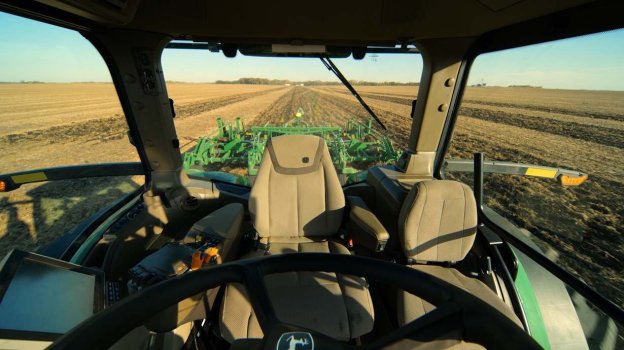K
Kathleen Martin
Guest
Farming is at the heart of human survival, yet it’s astounding that two decades into the 21st century agriculture remains hugely dependent on manual labor. 5G in agriculture is changing that by supporting the automation of repetitive and labor-intensive tasks, potentially beginning a new era in the history of modern farming.
Sustainability has never been more critical than now, and smart farming may play a key role in food crop production. Leveraging a combination of 5G, edge computing and artificial intelligence (AI) that allows for connectivity at a higher speed with lower latency, smart farming could become a game changer as we face a crossroads in resources and production.
A whole new approach to leveraging the field
There are several key factors driving the problems in 21st-century food production. Farming in 2019 cost an estimated $350 billion in the United States, up 1.1% from 2018, and is expected to climb. Demand is rising while natural resources diminish. Food security is a growing challenge in the face of climate change. Crops are extremely vulnerable to greenhouse gas emissions, which raise global temperature, increase pest and weed infestation, and alter precipitation patterns. All of these challenges can lead to reduced crop yields.
Moreover, as climate change affects the land and weather, the global population is expected to increase to over 9 billion people by mid-century. Despite this growing need to adequately feed people, food waste is a significant problem, with only 14% of food produced reaching consumers. How best to implement practices to reduce food waste is up in the air, and there are obstacles at every level of the supply chain from the farmer to the consumer. Considerations include preserving and packaging food, transportation, grocery store shelf life, consumer demand and even consumer meal planning.
More than two years into the pandemic, we are seeing rising prices at the grocery store due to inflation, high consumer demand and disruptions in supply chains. The U.S. Department of Agriculture forecasts that in 2022, supermarket items will increase between 1.5–2.5%; processed fruits and vegetable prices alone are expected to jump between 2–3% this year. Dining out will cost more, too, as restaurants and hotels recalibrate demand as COVID-19 continues to interrupt services.
Continue reading: https://www.verizon.com/about/news/5g-in-agriculture-smart-farming-transforming-industry
Sustainability has never been more critical than now, and smart farming may play a key role in food crop production. Leveraging a combination of 5G, edge computing and artificial intelligence (AI) that allows for connectivity at a higher speed with lower latency, smart farming could become a game changer as we face a crossroads in resources and production.
A whole new approach to leveraging the field
There are several key factors driving the problems in 21st-century food production. Farming in 2019 cost an estimated $350 billion in the United States, up 1.1% from 2018, and is expected to climb. Demand is rising while natural resources diminish. Food security is a growing challenge in the face of climate change. Crops are extremely vulnerable to greenhouse gas emissions, which raise global temperature, increase pest and weed infestation, and alter precipitation patterns. All of these challenges can lead to reduced crop yields.
Moreover, as climate change affects the land and weather, the global population is expected to increase to over 9 billion people by mid-century. Despite this growing need to adequately feed people, food waste is a significant problem, with only 14% of food produced reaching consumers. How best to implement practices to reduce food waste is up in the air, and there are obstacles at every level of the supply chain from the farmer to the consumer. Considerations include preserving and packaging food, transportation, grocery store shelf life, consumer demand and even consumer meal planning.
More than two years into the pandemic, we are seeing rising prices at the grocery store due to inflation, high consumer demand and disruptions in supply chains. The U.S. Department of Agriculture forecasts that in 2022, supermarket items will increase between 1.5–2.5%; processed fruits and vegetable prices alone are expected to jump between 2–3% this year. Dining out will cost more, too, as restaurants and hotels recalibrate demand as COVID-19 continues to interrupt services.
Continue reading: https://www.verizon.com/about/news/5g-in-agriculture-smart-farming-transforming-industry

